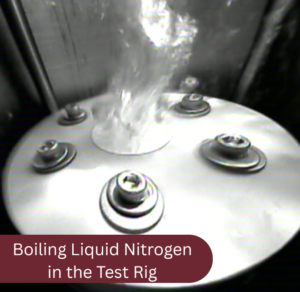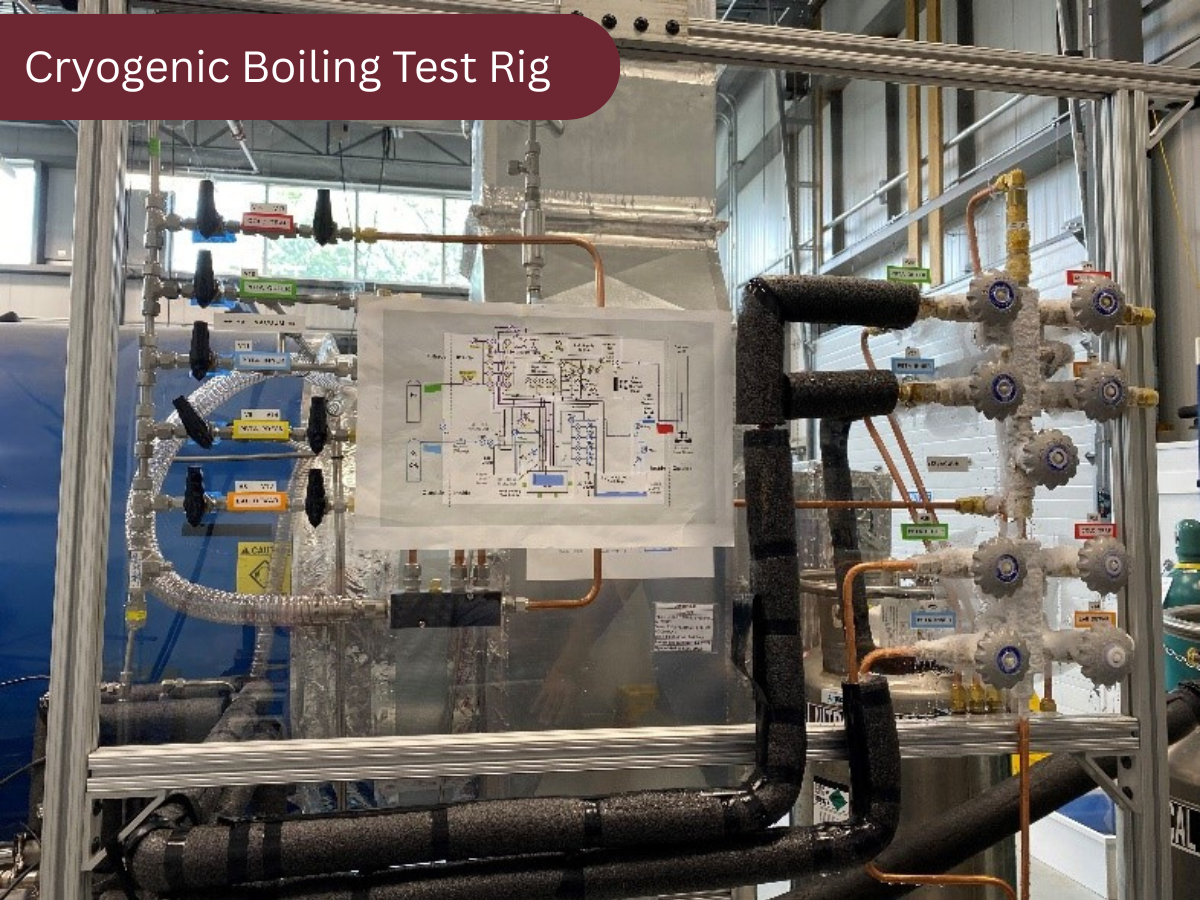Measuring Heat Transfer to Boiling Cryogenic Fluids
Creare has successfully completed an extensive test campaign to measure heat transfer to boiling cryogenic fluids. These tests generated critical data related to cryogenic fluid management that will help engineers design the next generation of rocket propulsion systems to support space exploration. Results were published in the most recent issue of Cryogenics, and a copy of the paper is available here.
Engineers need accurate tools to design efficient processes and lightweight components for cryogenic fluid management (CFM) to enable the next generation of space exploration missions. A common and critical element of CFM is the need to chill down a warm propellant tank, fill it with liquid cryogen, and maintain the cryogen in liquid form for extended periods until it is used or transferred. Boiling of the propellant inside the tank is a key phenomenon that controls the rate of cooldown and potential loss of fluid during storage.
Creare and Case Western Reserve University (CWRU) are developing data and correlations for pool boiling that will support the design of efficient propellant management systems. These data and methods improve on existing technology because they are based solely on measurements of cryogenic boiling and account fully for differences between boiling during cooldown and steady boiling in the cold propellant tank.

Creare designed the cryogenic test facility and measured heat transfer for key cryogenic propellants. CWRU assessed the existing literature, incorporated new data from Creare’s tests, and developed the improved correlations. Creare measured boiling behavior for liquid nitrogen, liquid argon, and liquid methane over a range of pressures and orientations in both steady and transient configurations, gathering a total of 445 new steady-state data points and 5,180 new transient-quenching data points. The test matrix fills gaps in the existing literature data. These data provided new insights into boiling mechanisms and enabled formulation of new boiling heat transfer correlations to support design of CFM systems and procedures. The accuracy of the new correlations is equal to or better than state-of-the-art correlations across all fluids and boiling regimes.
